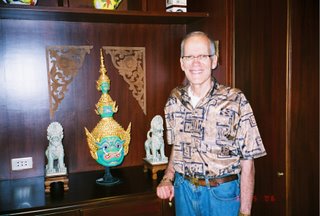TPO Classic Power
 Russian violinist Boris Broytsyn signs autographs following his performance at Nakhonpathom, Thailand
Russian violinist Boris Broytsyn signs autographs following his performance at Nakhonpathom, ThailandThailand Philharmonic Orchestra. Nakhonpathom, Thailand. May 21, 2011. The TPO is adept at presenting programs that are both adventuresome and traditional. This week’s program of Shostakovich, Dvorak and Wagner, was a good example. After a short Thai traditional song arranged for orchestra, the TPO launched into Dmitri Shostakovich’s Violin Concerto No. 1, with Russian violinist Boris Brovtsyn. Now based in London, 34-year old Brovtsyn is embarked on an international career, and it’s easy to predict that we’ll be hearing a lot of him. While Shostakovich is home territory for Russian artists, only the very best can negotiate Shostakovich’s first violin concerto, an intricate, long, varied and powerful tour-de-force of powerful composing, requiring virtuosic technique and musicality to perform. Both soloist Brovtsyn and the TPO under its Chief Conductor Gudni Emilsson, were more than equal to the challenges and produced a mesmerizing performance, which was suitably rewarded by the prolonged applause and cheering of the large audience.
Following the intermission, the TPO performed Dvorak’s Symphonic Variations, not one of Dvorak’s greatest works, and Wagner’s Overture “Tannhauser.” In neither piece was the TPO quite up to its usual performance standards. The Dvorak work suffered from undisciplined string playing, while Wagner labored under rough brass entrances. My guess is that so much time was spent rehearsing the Shostakovich, that it left little time for Emilsson to take the TPO through its paces with the much easier Dvorak and Wagner. Still, it was good to hear both works played by an orchestra that can’t play anything really badly.









